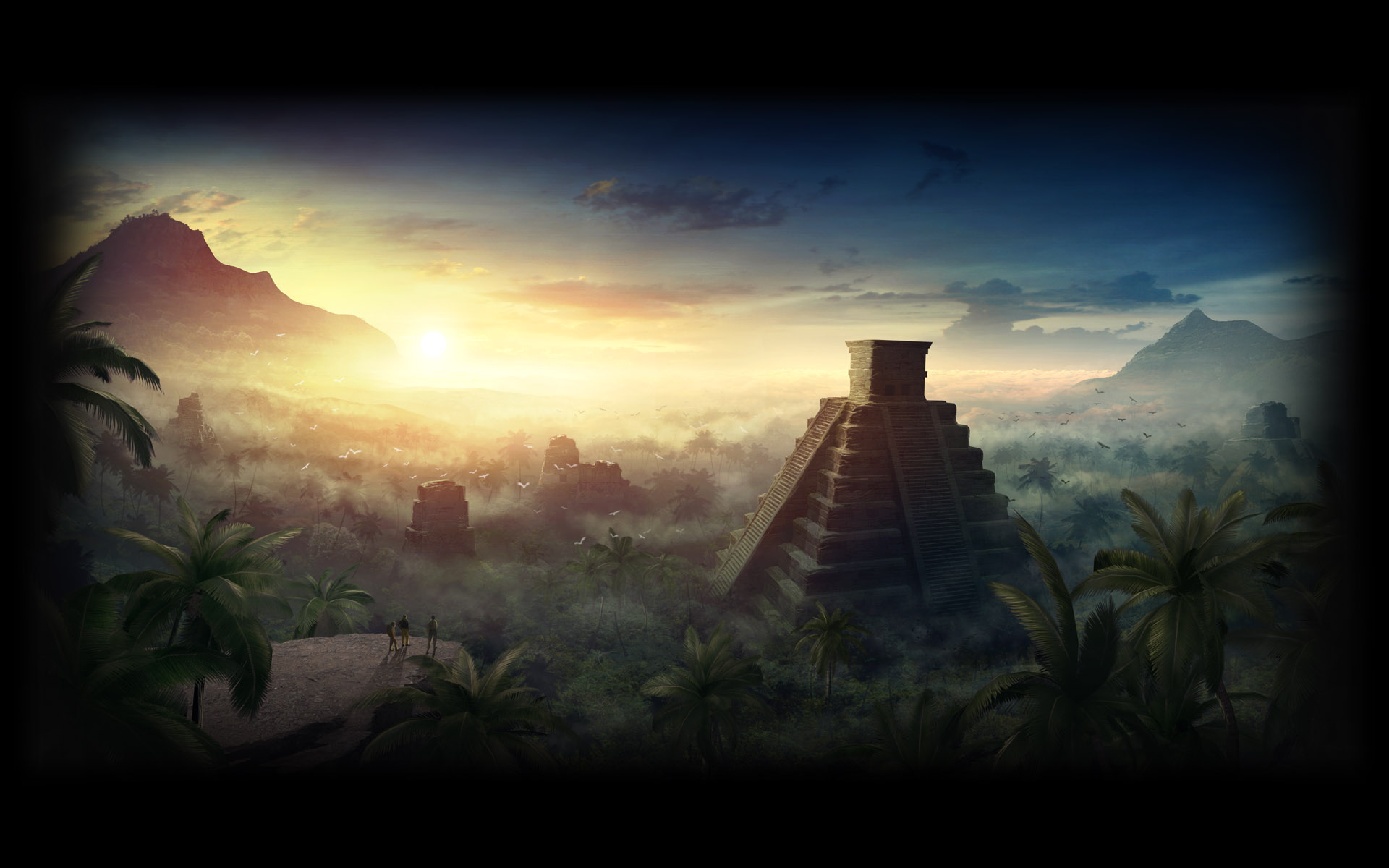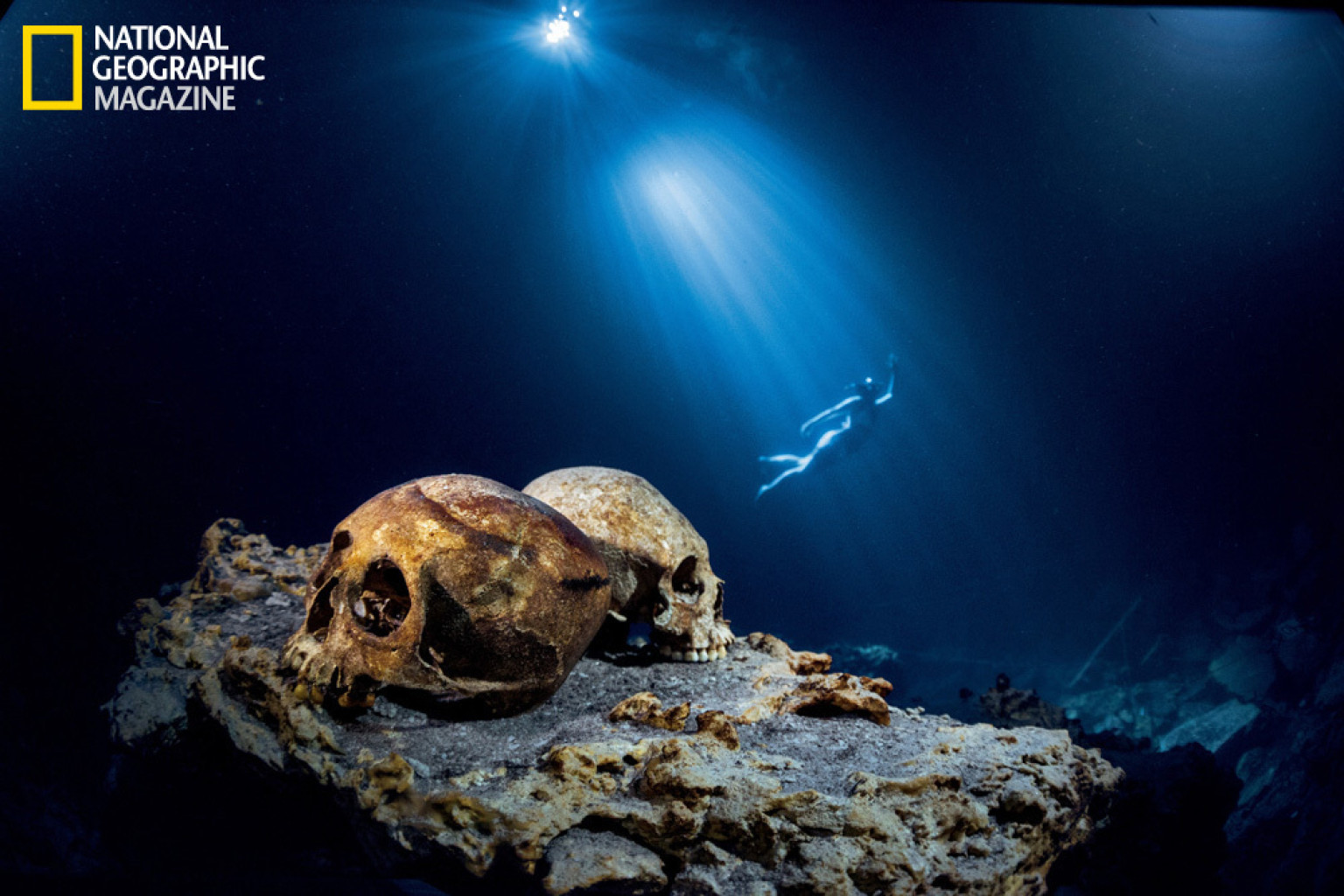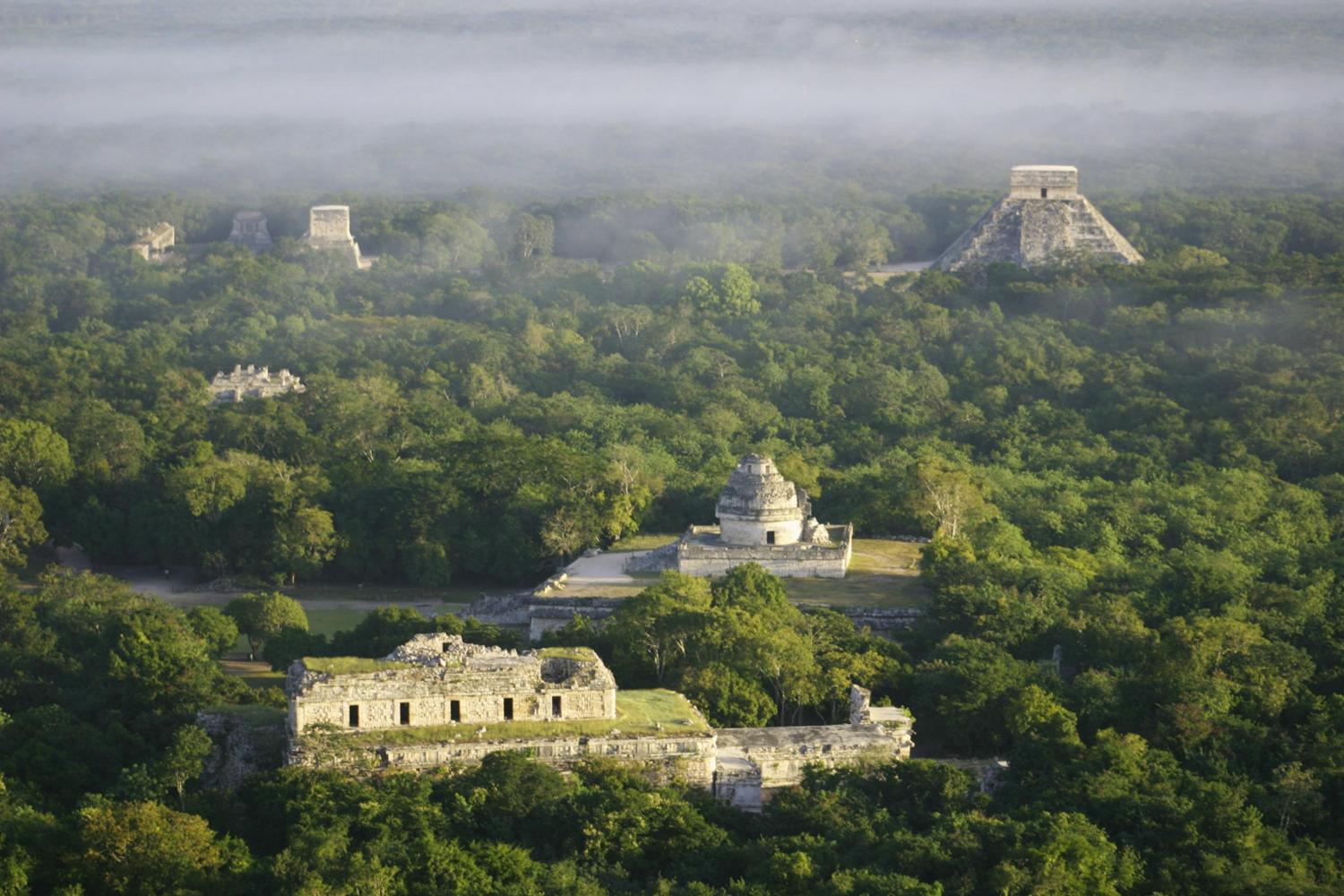© pacejmiller
Brilio.net/en - Not even the harshest sunlightcouldcut through the thick roof of lush foliage in the fertile and prosperous land, which the great Mayans civilization claimed as their own. Sometimes, small patches of faint sunlight managed their ways to the rainforests floor, illuminating the pathswherethe greatest warriorsof other nation carefully took their stepsbelow.
The Spanish conquistadores sailed the wildAtlantic Oceanall the way to Central America in 1517, with a goal to die for.In great ambitions of might and power, theywere sent to vanquish the Mayans and to claim their precious land. But they made their way through the thick rainforest only to find that much of their work had been done.
The Mayas towering limestone cities, a classic and enormous feature of one of the ancient worlds most advanced civilization, were already being reclaimed by the savage jungle.Themysterious disappearance of their targetleft the mesmerized colonists abundant of questions in their heads.
Until today, those questions are still plagued historians; how the MayanEmpiremet their end, creating one of the history's most enduring mysteries. The Mayan survived. They even managed to stand a long resistance to the European sovereignty. But by the time the Spanish landed their shores, the powerful civilization. Themighty ancient nation witha political and economic power which had erected the region's iconic pyramids, and at one time sustained a population of some two million people, had vanished as if swallowed by the Mother Earth.
The Greatest Ancient Civilization
In the chronology of Mesoamerica, the Mayan sit between the earlier Olmec and later Aztec civilizations. The first Maya sites were built during the first millennium BC, and the civilization reached its glory around AD 600. Archeologists have discovered thousands of ruins from ancient Mayancities, most of which are spread across southern Mexico's Yucatan peninsula, Belize and Guatemala.
Its not impossible to assumethatthe region's tropical rainforest could still be hiding more ruins beneath its thick layers of impenetrable foliage.

Archeologists had spent about 200 years of deep study to get decent knowledge about the Mayans, before being impressed by the ancient societys vast achievements. Their distinctive art and architecture provethat these were master craftspeople.
The Mayan were also high achievers and intellectually advanced. Theyare specializedin math and astronomyandused their knowledge to build their pyramids and temples aligned with the precession of planets and the solar equinoxes. They were the only Mesoamerican civilization utilizing written script, a bizarre-looking set of characters known as Maya hieroglyphs.
The wonderstheMayan left behind have earned them an everlasting mystique. Thus, the way such a great civilization metremainsone of greatest mysteries overshadows our modern world.
Mysterious Fall-off

In order to solve the mystery (at least, we give it a try), lets start with things we already know. Around AD850, after some centuries of prosperity and supremacy, the Mayansbegan to abandon their vigorously built great cities, one after another. The result is, in less than 200 years, the civilization had declined to a fragment of its former glory. Later there would be an isolated revival, yet the grandeur of the Maya civilizations heyday had gone forever.
Maybe the Mayans disappearance is dramatic, but what make it so striking is that despite many decades of study, archeologists havent yet to find any sensible ideas of what caused it. As happened to the Roman Empire, we may assume multiple culprits for Mayas downfall.
From the nature of their collapse, some researchers believe that the Mayansfellvictimstoa major catastrophe: the one able to topple city after city in its wake.
There areplentytheories about what snuffed the Maya off, from the old favorites (invasion, civil war, collapsing trade routes) to a particularly popular one. The latest emerged after the first Central American ancient climate records were pieced together in the early 1990s: that the Maya civilization was eventually doomed by a period of severe climate change.
In immediate centuriesbeforethe Mayansfall-off (called Classical Age between about AD250 and 800), the civilization peaked. Cities flourished and harvests were good. Climate records (which mostly come from the analysis of cave formations) show that during this time the Maya regions had received relatively high rainfall. But the same records show that starting in about AD820, the region was stricken by 95 years of routine droughts, some of which lasted for decades.
Ever since these droughts were first identified, researchers have noticed a prominent correlation between the droughts timing and that of the Mayanscollapse: most of the Classic Mayancities fell between AD850 and 925 largelycoincidingwith the century of drought.
While a simple correlation isnt enough to solve the mystery, the tight fit between droughts and the downfall leads many researchers to believe that the 9th Century climate shift might have led the Mayans to their doomed end.
The Lame Clue
But as attractive as the drought hypothesis is, one piece of evidence has been standing in its way. Because, while most Maya cities declined as the climate dried, not all did.
The fallen Maya cities during the 9th Century droughts were mostly situated in the southern parts of their territory, the modern day Guatemala and Belize. However, in the Yucatan peninsula to the north, the Maya civilization not only survived the severe droughts, they also began to flourish.
While the southern Maya cities began to deteriorate, the northern ones enjoyed the rising prosperity, being declared by the rising of some thriving urban centres. These included one of the greatest of all Maya cities, Chichen Itza (one of the worlds new seven wonders).

The northern revival stood against the drought theory of Mayas demise, if the south has permanently vanished under the climate shift, then why wasnt the north?
Experts have proposed many explanations for the north and south divergence, but none so far fulfilling until recently,asa new discovery has gone half-way in resolving this enduring puzzle.
Archeologists who study on Mayas history find that dating is quite difficult. Almost none of the Mayas written records, which once numbered in the thousands, survived past colonial times (the Spaniardsburned most of Maya books; only four are now knownto havesurvived). To determine the times when ancient Maya cities flourished,scientistsrely on calendar inscriptions on stone monuments, stylistic analysis of the Mayas ornate ceramics, and radiocarbon dates from organic materials.
Earlier studies had already determined the approximate ages of the main metropolis in the northern Maya civilization; a clue that had revealed the fact that the north had endured the droughts. However, until recently these data had never been gathered together to support a single study.
The Megadrought
Eventually, in a study published in December, archeologists from the US and the UK brought together for the first time all of the calculated ages for urban centers in the northern Maya lands. These comprise about 200 dates from sites across the Yucatan peninsula, half obtained from stone calendar inscriptions and the half from radiocarbon dating.
The researchers then were able to construct a broad picture of what times the northern Maya cities had been active, and the times when they each might have deteriorated and finally doomed. The later findings would significantly change our understanding of when, and perhaps even how the Mayans civilization met its end.
Against the previous belief (the north cities had declined), both south and north cities actually suffered from deteriorating during the time of droughts.
There was a 70% decline in stone calendar inscriptions in the second half of the 9th Century. This same pattern of decline is also indicated in the radiocarbon dates across the northern Maya region, which indicate that wooden construction also dwindled during the same time period. This is the time that the droughts are believed to have destroyed the southern Mayan cities, but evidently the north cities didnt survive these hard times unscathed.
Researchers believe that the decreasing creative activities in the north signify that political and societal collapse was ongoing. The north certainly had fared better than the south during the 9th Century, but the new evidence suggests region nevertheless suffered a significant decline, as well. They were experiencing a decline in construction, even one as large as this, is hard to spot without the comprehensive, region-wide analysis provided by the new study.
The new evidence of the northern decline in the 9th Century is an intriguing addition to Mayas history, yet it doesnt stand against the popular belief. After all, we already knew that the northern cities had survived the droughts (Chichen Itza and other centres had made their way the 10th Century).
It is the second decline that might bring changes in our understanding of Mayas story. After a temporary recovery during the 10th Century (which was coincides with a significant escalation in rainfall), researchers noticed another stagnation of construction in numerous Maya sites.
Stone carving and other building activities seemed to have fallen almost half between AD1000 and 1075. Just as happened in the crisis of 200 years prior, the researchers discovered that this 11th Century Mayan decline also took place against a backdrop of severe drought. And its not just another drought.
The ones in the 9th Century was considered the deadliest, but the 11th Century drought was beyond catastrophic. At that time, the region had seen the worst drought in the last 2,000 years: a megadrought.
Climate records show that rainfall was dramatically low in between AD1020 and 1100, a snug fit with the derived dates for the collapse of the northern Maya. One correlation doesnt mean much on its own. But find two, and even skeptics might start to whisper causation.
The 11th Century megadrought had been estimated to be the cause of the fall of the northern Maya before, but the dating techniques used had given ambiguous ages, making it hard to tell if the timings of the two events really did match.
The recent analysis published in the December study offers us greater certainty that climate change was contemporaneous with not one, but two devastating periods of Maya decline. If the first wave of droughts had finished off the Maya in the south, it looks like the second wave may have brought on their demise in the north.
The second wave of deadly droughts had ended one of the mightiest civilization on Earth. There was no real revival for the Mayans. Chichen Itza and most of the other important centres in the north would forever fall and never rise again.
We have seen small yet noteworthy exceptions, such as a northern city of Mayapan (flourished from the 13th to 15th centuries) but these cities would never rival the size and complexity of the Classic Maya cities. In many ways, we can assume that the 11th Century was the Mayas last gasp.
With these recent conclusions, the hypothesis of climate change played a significant role in the Mayas downfall is even making more sense. But how?
The Bitter Ending of A Great Civilization

Archaeological explanations suggest many theories of how the megadrought doomed such a great civilization. Most of them involve agriculture. Like all large civilization, Mayans were heavily dependent on crops. The simplest explanation for the Mayas fall during the megadrought that gradually declining crop yields may have diminished the Mayas political influence, eventually leading to full-on societal disintegration.
But even the scientist who brought the drought hypothesis admits that the picture must be more nuanced than that.
We know that there was already increased warfare and socio-political instability throughout the Maya area prior to the 9th Century droughts, says Julie Hoggarth at Baylor University in Waco, Texas, who co-led Decembers climate analysis.
Inter-city conflicts are pretty good way to bring a huge civilization to a downfall, too. Its possible that the Mayan simply fought themselves apart. But that idea still leaves the question of the droughts and those well-fitting dates. Then perhaps, its a combination of two causes.
As food supplies shrank during the dry seasons, competition for resources would probably have become even more intense, perhaps eventually reaching a tipping point which caused the ancient Maya civilization to fracture without any chance to be repaired.
But at least, we have one explanation which doesnt involve any warfare. It may not have been the Mayans dark side that caused their downfall, but their talents. We already know that the Mayan were accomplished craftsmen, as well as gifted environmental sculptors.
To grow enough food to feed millions, Mayans dug huge canal systems, some of them reached hundreds of miles, which allowed them to drain and elevate the infertile lands that cover much of the Maya heartland, creating new arable lands (some archeologists call these floating gardens). They also cleared huge tracts of forest, both for agriculture and to make room for their cities.
Some scholars thought that Mayans skilled nature manipulation could take its toll and caused their eventual collapse, by somehow worsened the impacts of natural climate change. For example, the deforestation to clear land for agriculture might have worsened the localized drying effects, leading to more significant agricultural losses during the drought.
A more indirect consequence of their agricultural excellence might simply have been that it allowed the population to grow too large, which might have increased their vulnerability to an extended food shortage, and, therefore, reduced their resistance to a drier climate.
Whatever the reason that ended the great Mayan civilization, we do know something about the fate of the people who were left to face its aftermath.
Around the AD1050, the Mayan began their journey. They abandoned the inland regions where their ancestors had thrived, and made their way in droves towards the Caribbean coast, the other source of water, approaching the lakes and sinkholes which occasionally punctuate the dense green of the Mayas former territory.
The great exodus of the Mayans may have been encouraged by hunger. If the crops had indeed failed following the 9th and 11th Century droughts, relocating nearer water might have made sense, either to access seafood or to take advantage of the wetter land near the sea. Whatever the reason, water was clearly on their minds.
But then again, there will always be the dark side to every story. It lies in one of the duties of a Mayan ruler: to communicate with Gods to ensure a wet year and good harvests. In many sites across Mayan territory, archeologists have dredged up human bones from the bottom of lakes and sinkholes.

They were likely the doorways to the underworld: a grim evidence that the people resorted to sacrificing to appease their deities.When the rains were abundant, and the civilization blossomed,it must have seemed like their prayers were being answered.
Source:BBC
(brl/tis)